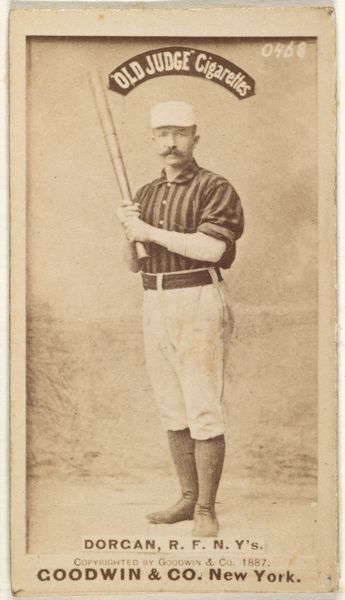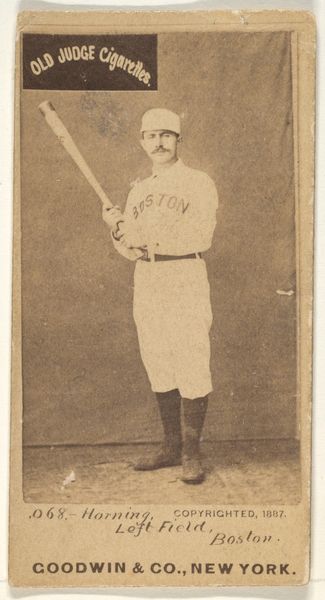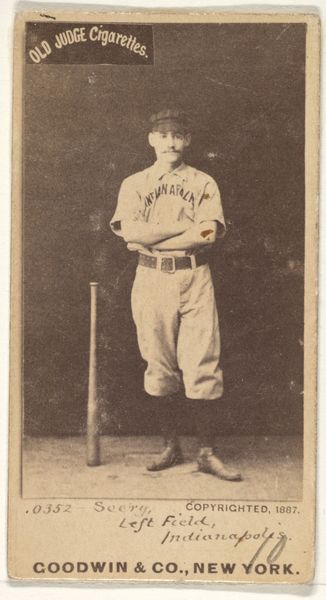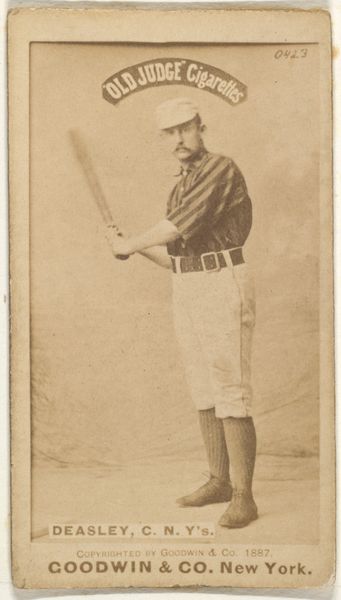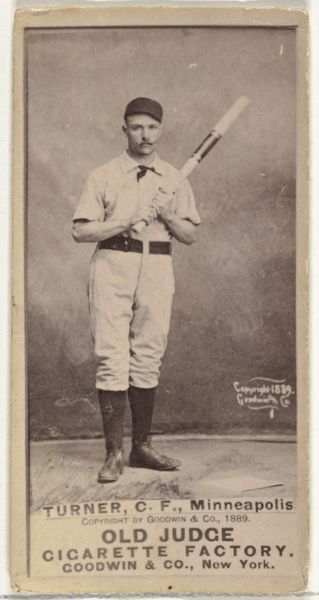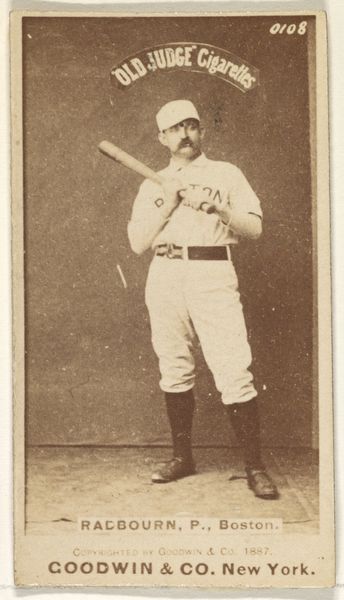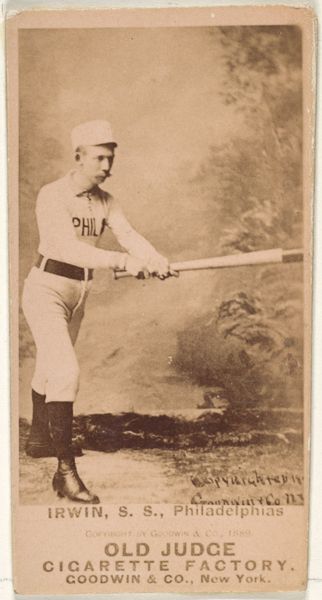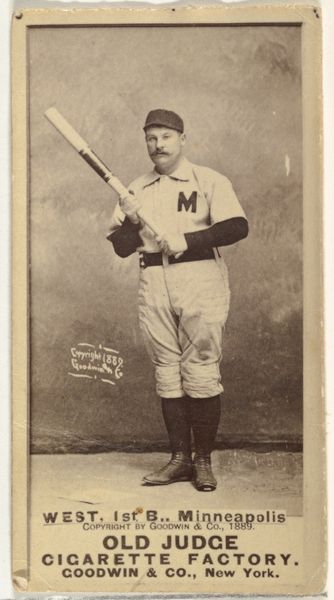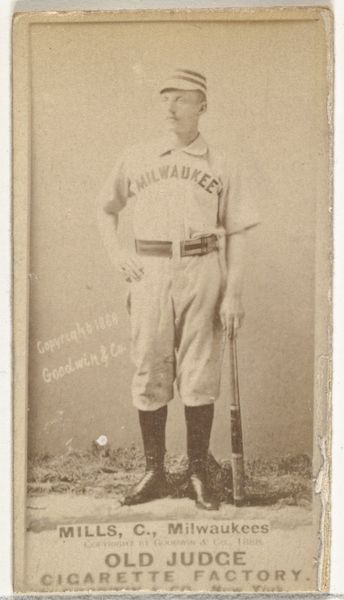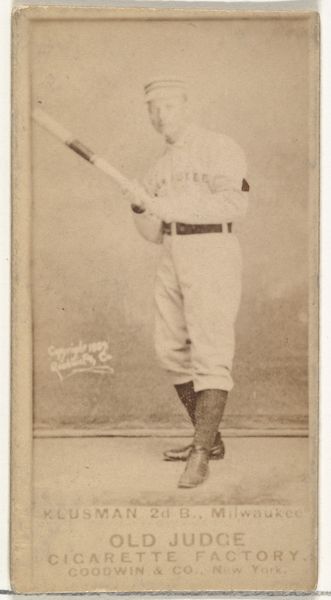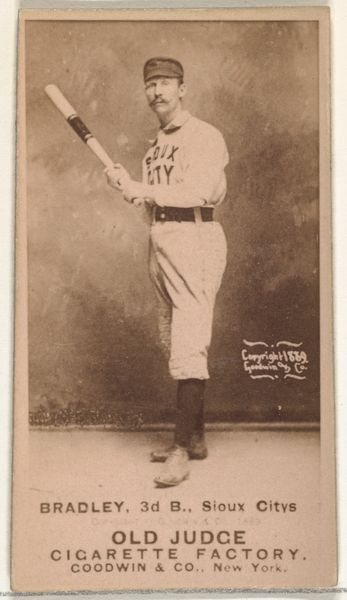
John Alexander "Bid" McPhee, 2nd Base, Cincinnati, from the Old Judge series (N172) for Old Judge Cigarettes 1888
0:00
0:00
drawing, print, photography
#
portrait
#
drawing
#
still-life-photography
# print
#
baseball
#
photography
#
men
#
realism
Dimensions: sheet: 2 11/16 x 1 3/8 in. (6.9 x 3.5 cm)
Copyright: Public Domain
Editor: So, this is "John Alexander 'Bid' McPhee, 2nd Base, Cincinnati," from 1888. It's a print, a baseball card actually, included in Old Judge Cigarettes. It’s interesting how these early baseball cards feel so staged. How do you interpret this work beyond its function as a commercial product? Curator: Well, let’s think about 1888. This was a time of massive industrialization and growing urban populations. How does this card reflect or even challenge dominant notions of masculinity and athleticism at the time, particularly with McPhee posed so deliberately? We should be asking questions about the commodification of athletes and its social impact, about the marketing of masculinity and sport as entertainment. Editor: That’s a good point. I hadn’t considered the staged pose as part of the broader societal context. It makes me wonder about the labor behind it too, both McPhee's as an athlete and the workers producing these cards. Curator: Exactly! The connection to Old Judge Cigarettes is key. The card, ostensibly about sport and health, is actually selling an addictive and harmful product. Can we unpack the ethical considerations of early sports marketing? This intersection of commerce, health, and athleticism deserves critical examination. It's essential that we interrogate the values and norms promoted through such visual artifacts, particularly their impact on gender, class, and race within late 19th-century America. Editor: That completely reframes how I see this little card. I guess I'm learning it’s never just about what's on the surface. Curator: Precisely. Everything we see—or think we see—is historically contingent and shaped by power structures. This seemingly simple baseball card is far more complex when you begin to ask critical questions.
Comments
No comments
Be the first to comment and join the conversation on the ultimate creative platform.
